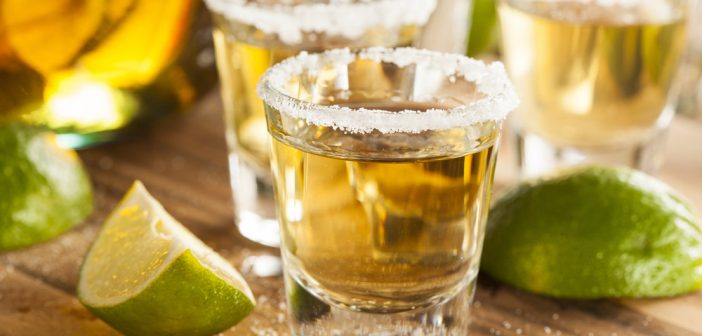Celebrity birthdays aside, July 24th comes in as one of the most interesting days of the year because it celebrates tequila. Whether you choose to drink it in a margarita with a side of tacos or shoot it straight up with salt and lime, tequila is hugely popular throughout the United States and Mexico. Knowledge junkies and serious drinkers alike will love sharing these incredible tequila facts with their friends.
Rooted in Plant Life
Like so many foods, beverages and textiles, tequila begins life as a plant. The blue agave produces a particular type of syrup that, when properly harvested and processed, turns a gorgeous, innocent plant into one of North and South America’s favorite drinks. The circular-bladed machete used to chop the leaves of the plant is called a coa, and if done properly, will expose the heart of the plant. Weighing up to 200 pounds, the heart of the agave is then boiled; the process of heating the heart removes its sap, which will be fermented and distilled.
Tequila and Denomination of Origin
In order to be called, advertised or sold as actual tequila, the product and all of its ingredients must come from Mexico. While lower-quality tequilas may come from one of several other regions of the country, those looking for the best will find that it comes from Jalisco. Other acceptable Mexican states that produce tequila include Michoacan, Guanajuato, Nayarit and Tamaulipas.
The Gormless Worm
If your relationship with tequila began with whispered rumors of a worm in the bottle, you are much like nearly every young person who has not yet encountered fine tequila. While the worm in the bottle is much more than a rumor, it is never found in a bottle of actual tequila. Instead, you will find the worm in mezcals; often mistaken for tequila, mezcals is made from a blend of agave plants rather than just the blue agave. Certain agave plants are home to a moth larvae that begins life as a gusano, or worm, that is placed in mezcal as a marketing strategy.
Aging Affects the Taste of Tequila
While it is true that an unopened bottle of tequila can last for up to five years, the length of time that the product is aged before reaching the shelves at your favorite liquor store impacts its taste. In fact, the effects of the aging process are so predictable that it divides the beverage into distinct groups. The most common type of tequila is referred to as blanco, and this is the unaged variety that is prominently featured on the shelves at your grocery store. Reposado tequila has been aged anywhere from two to eleven months, acquiring sweet flavors like caramel and vanilla during the process. Finally, anejo or extra anejo tequila has been aged for longer than 11 months; during its aging period, tequilas classified as anejo will pick up rich, woody flavors normally associated with chocolate or tea. Like good wine and whiskey, the age of a bottle of tequila has an impact on not just its flavor, but its price.
Tequila as a Medicine?
Although today’s practitioners will not recommend tequila for its medicinal purposes, the drink was once very popular as a treatment. In 1918, an outbreak of the Spanish flu saw many ill patients seeking treatment from doctors who suggested that tequila, along with salt and lime, would aid in their recovery. While your family doctor probably will not suggest boozy shots for whatever is ailing you, some people swear that drinking tequila will ease certain cold symptoms like congestion or a sore throat.
Natives Drink it Differently
A lot of Americans drink tequila as a shot. The process starts with licking salt and ends with killing the actual taste of the tequila by sucking the juice from a lime wedge. However, natives of Mexico take an entirely different approach; instead of the rapid consumption that seems to emphasize speed and avoiding the real flavor of the drink, it is savored. Whether you are planning a tasting trip to Jalisco or you simply want to learn to drink tequila like a native, you should know that proper consumption of tequila involves sipping it like you would with a good whiskey. Typically enjoyed in a container that looks like a tall, narrow shot glass, newbies in Mexico can still take advantage of the salt and lime, although the process is somewhat different than it is in the United States. If you happen to find yourself in Mexico, take the time to learn how to drink tequila as the natives do.
Celebrate in Style
Now that you know how to distinguish between true tequila and mezcal, and understand more about the beverage’s aging and properties, and are aware that the people of Mexico drink it differently, you can consider yourself ready for National Tequila Day!








